
Pigino Group
Le ciglia sono organelli simili a capelli che si estendono dalla superficie di quasi tutti i tipi di cellule polarizzate del corpo umano. Sono cruciali per varie funzioni motili e sensoriali durante lo sviluppo, la morfogenesi e l’omeostasi. Le ciglia sensoriali agiscono come antenne cellulari, rilevando segnali ambientali e morfogenici. Le ciglia mobili, invece, vengono utilizzate per spingere le cellule stesse o per spostare i fluidi sugli epiteli (ad esempio nei nostri polmoni). I disturbi correlati alle ciglia (noti come ciliopatie) colpiscono molti tessuti e organi in vari modi.
La disfunzione ciliare è la causa di un numero crescente di malattie di un singolo organo e forme sindromiche complesse tra cui idrocefalo, infertilità, malattie delle vie aeree, malattie policistiche del rene, fegato o pancreas, nonché malattie della retina e difetti dell’udito e dell’olfatto.
Il Pigino Group indaga la struttura 3D dei componenti molecolari delle ciglia nel loro contesto cellulare nativo e in isolamento, cercando di capire come orchestrano le funzioni specifiche delle ciglia. Il nostro lavoro si posiziona tipicamente proprio nell’interfaccia tra biologia strutturale e biologia cellulare molecolare. Combiniamo quindi gli strumenti e le metodologie più recenti di entrambi i campi, dalla tomografia crioelettronica, alla microscopia a luce e fluorescenza correlativa (CLEM), ai sistemi dinamici ricostituiti in vitro, alla genetica, alla biochimica, ai metodi di analisi delle immagini, fino alla biologia cellulare più classica.
L’obiettivo finale del Pigino Group è comprendere le cause molecolari alla base della funzione e della disfunzione ciliare, in modo che possano essere sviluppate possibili strategie terapeutiche per le ciliopatie.
Membri del gruppo
-
 Gaia Pigino
Gaia Pigino
Associate Head of Structural Biology Research Centre -
 Gonzalo Alvarez Viar
Gonzalo Alvarez Viar
Postdoc -
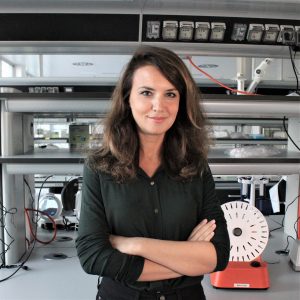 Paola Capasso
Paola Capasso
Senior Technician -
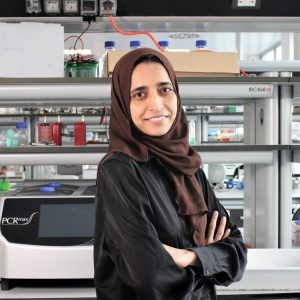 Rubina Dad
Rubina Dad
Postdoc -
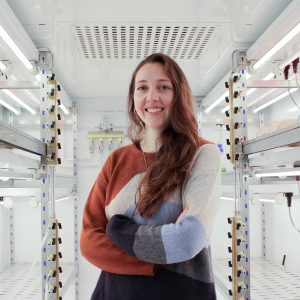 Helen Elizabeth Foster
Helen Elizabeth Foster
Postdoc -
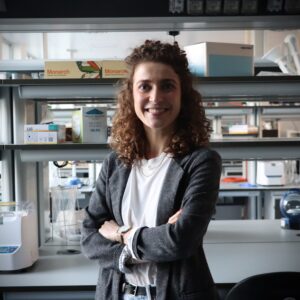 Malina Karen Iwanski
Malina Karen Iwanski
Postdoc -
 Nikolai Klena
Nikolai Klena
Postdoc -
 Samuel Edward Lacey
Samuel Edward Lacey
Postdoc -
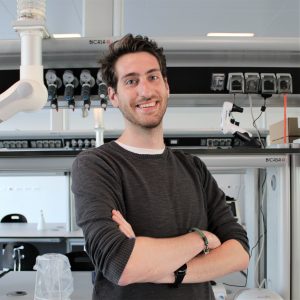 Giovanni Maltinti
Giovanni Maltinti
PhD Student -
 Adrian Pascal Nievergelt
Adrian Pascal Nievergelt
Scientific Visitor
Pubblicazioni
-
08/2021 - Journal of Cell Science
In vivo imaging shows continued association of several IFT A, B and dynein complexes while IFT trains U-turn at the tip
Flagellar assembly depends on intraflagellar transport (IFT), a bidirectional motility of protein carriers, the IFT trains. The trains are periodic assemblies of IFT-A and IFT-B subcomplexes and the motors kinesin-2 and IFT dynein. At the tip, anterograde trains are remodeled for retrograde IFT, a process that in Chlamydomonas involves kinesin-2 release and train fragmentation. However, […]
-
06/2021 - Journal of Cell Science
The structural basis of intraflagellar transport at a glance
The intraflagellar transport (IFT) system is a remarkable molecular machine used by cells to assemble and maintain the cilium, a long organelle extending from eukaryotic cells that gives rise to motility, sensing and signaling. IFT plays a critical role in building the cilium by shuttling structural components and signaling receptors between the ciliary base and […]
-
05/2021 - Current Biology
Intraflagellar transport
Cells need to be able to sense different types of signals, such as chemical and mechanical stimuli, from the extracellular environment in order to properly function. Most eukaryotic cells sense these signals in part through a specialized hair-like organelle, the cilium, that extends from the cell body as a sort of antenna. The signaling and […]
-
03/2021 - PLoS Genet
Ccdc113/Ccdc96 complex, a novel regulator of ciliary beating that connects radial spoke 3 to dynein g and the nexin link
Ciliary beating requires the coordinated activity of numerous axonemal complexes. The protein composition and role of radial spokes (RS), nexin links (N-DRC) and dyneins (ODAs and IDAs) is well established. However, how information is transmitted from the central apparatus to the RS and across other ciliary structures remains unclear. Here, we identify a complex comprising […]
-
01/2021 - Science
Tubulin glycylation controls axonemal dynein activity, flagellar beat, and male fertility beat, and male fertility
Posttranslational modifications of the microtubule cytoskeleton have emerged as key regulators of cellular functions, and their perturbations have been linked to a growing number of human pathologies. Tubulin glycylation modifies microtubules specifically in cilia and flagella, but its functional and mechanistic roles remain unclear. In this study, we generated a mouse model entirely lacking tubulin […]